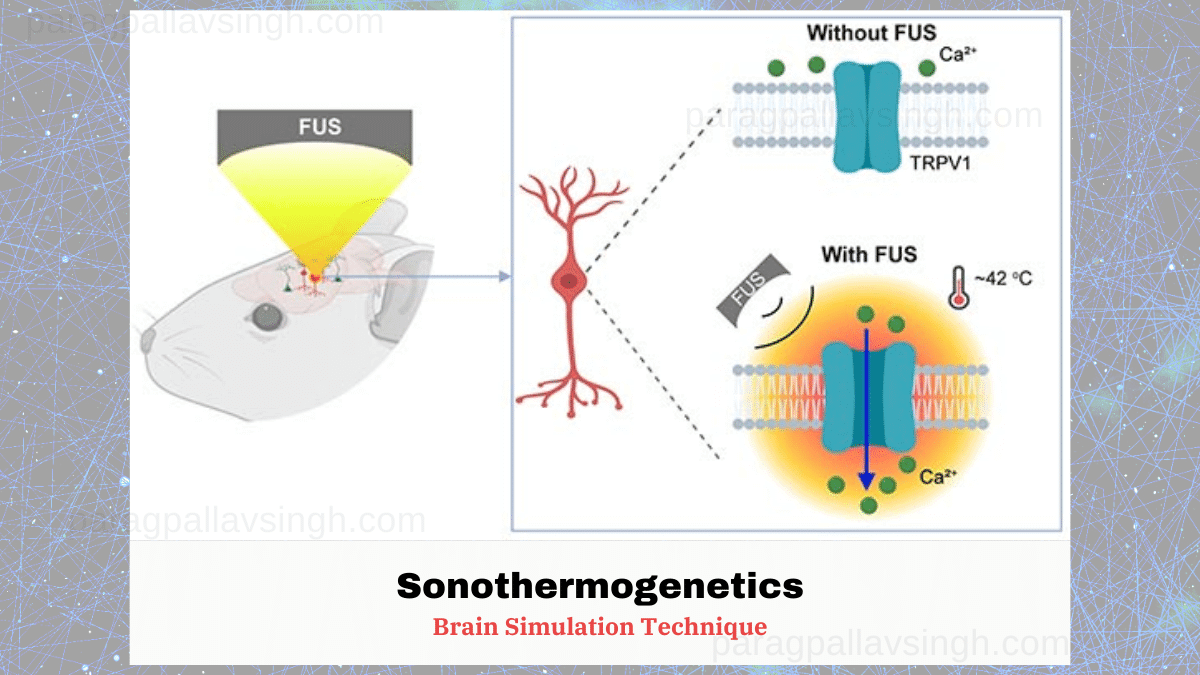Neurological disorders like Parkinson’s disease and epilepsy have had some treatment success with deep brain stimulation, but those require surgical device implantation. A multidisciplinary team at Washington University in St. Louis has developed a replacement brain stimulation technique, Sonothermogenetics, using focused ultrasound that’s ready to turn specific sorts of neurons within the brain on and off and precisely control motor activity without surgical device implantation.
The team, led by Hong Chen, professor of biomedical engineering within the McKelvey School of Engineering and of radiation oncology at the varsity of drugs, is that the first to supply evidence showing noninvasive, cell-type-specific activation of neurons within the brain of a mammal by combining ultrasound-induced heating effect and genetics, which they need named sonothermogenetics. it’s also the primary work to point out that the ultrasound- genetics combination can robustly control behavior by stimulating a selected target deep within the brain.
Results of the three years of research, which was funded partially by the National Institutes of Health’s BRAIN Initiative, were published online in Brain Stimulation on May 10, 2021.
The senior research team included renowned experts in their fields from both the McKelvey School of Engineering and therefore the School of drugs, including Jianmin Cui, professor of biomedical engineering; Joseph P. Culver, professor of radiology, of physics, and of biomedical engineering; Mark J. Miller, professor of drugs within the Division of Infectious Diseases within the Department of Medicine; and Michael Bruchas, formerly of Washington University, now professor of anesthesiology and pharmacology at the University of Washington.
“Our work provided evidence that sonothermogenetics evokes behavioral responses in freely moving mice while targeting a deep brain site,” Chen said. “Sonothermogenetics has the potential to rework our approaches for neuroscience research and uncover new methods to know and treat human brain disorders.”
Using a mouse model, Chen and therefore the team delivered a viral construct containing TRPV1 ion channels to genetically-selected neurons. Then, they delivered small burst of warmth via low-intensity focused ultrasound to the select neurons within the brain via a wearable device. The heat, only a couple of degrees warmer than blood heat , activated the TRPV1 ion channel, which acted as a switch to show the neurons on or off.
“We can move the ultrasound device worn on the top of free-moving mice around to focus on different locations within the whole brain,” said Yaoheng Yang, first author of the paper and a grad student in biomedical engineering. “Because it’s noninvasive, this system has the potential to be scaled up to large animals and potentially humans within the future.”
The work builds on research conducted in Cui’s lab that was published in Scientific Reports in 2016. Cui and his team found for the primary time that ultrasound alone can influence ion channel activity and will cause new and noninvasive ways to regulate the activity of specific cells. In their work, they found that focused ultrasound modulated the currents flowing through the ion channels on the average by up to 23%, counting on channel and stimulus intensity. Following this work, researchers found on the brink of 10 ion channels with this capability, but all of them are mechanosensitive, not thermosensitive.
The work also builds on the concept of optogenetics, the mixture of the targeted expression of sunshine -sensitive ion channels and therefore the precise delivery of light to stimulate neurons deep within the brain. While optogenetics has increased discovery of latest neural circuits, it’s limited in penetration depth thanks to light scattering and requires surgical implantation of optical fibers.
Sonothermogenetics has the promise to focus on any location within the mouse brain with millimeter-scale resolution without causing any damage to the brain, Chen said. She and therefore the team still optimize the technique and further validate their findings.
Read here about more Science and Technology updates.


